Describe the Response to the Plantar Stimulation Use Appropriate Terminology
The lower limbs show extension and internal rotation at the hip with the extension of the knee and plantar flexion of the feet. What iontophoresis agent would be the most appropriate to treat muscle or joint pain.

Solved Antar Reflex Stimulate The Sole Of Your Partner S Chegg Com
Which electrical stimulation term is used to describe the intensity of the electrical current.
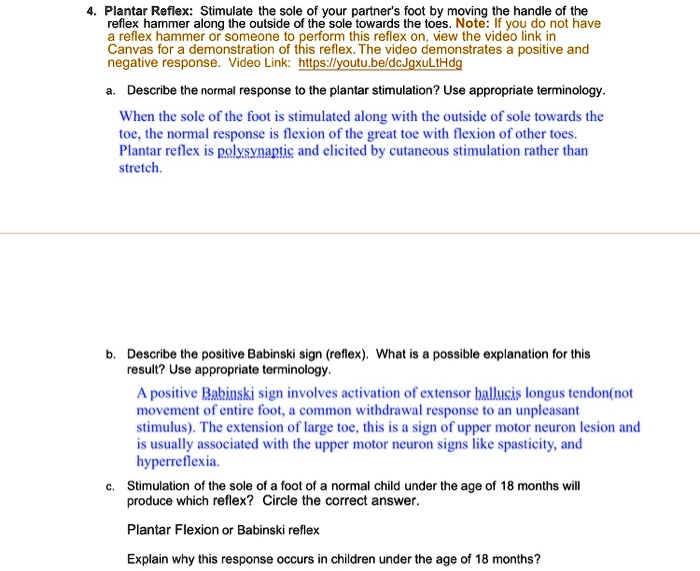
. In some patients stroking the sole produces extension dorsiflexion of the big toe often with extension and abduction fanning of the other toes. Label the skeletal muscle cell structures and features of the sarcomere. The plantar response because the sole is the plantar surface of the foot the toe or big toe sign or phenomenon and the Babinski reflex response or phenomenon.
1To restore or enhance postural responses or normal patterns of motion in a patient with a deficient neuromuscular mechanism. The Babinski reflex also called the Babinski sign or plantar reflex is an automatic reflex in the foot in response to stimulation. 2 Single contraction of muscle fiber in response to a single stimulation.
The neuromuscular response by flexion of the foot via additional stimulation of the plantar muscles. Toes are typically abducted and hyperextended. But the cerebellum is responsible for calculating the appropriate response.
Describe the normal response to the plantar stimulation. Match each protein with the appropriate filament. The toes curl down and inward.
Most reflexes are polysynaptic more than one synapse and involve the activity of interneurons in the integration center. 3 The period of time in which the pulling force of a muscle is increasing. These responses included a strong initial withdrawal of the flexor muscle caused by activation of the alpha motor neurons inhibition of the extensor muscle mediated through inhibitory interneurons and sustained contraction of the flexor mediated by a spinal cord neuronal circuit.
Specifically it involves slow flexion of the elbow wrist and fingers with adduction and internal rotation at the shoulder. All of the following would be appropriate activities to initiate today except. Contain myosin and actin myofilaments.
These reflexes are executed by the successive activation of a certain number of neurons that are mutually connected. Label the microscopic structure of a skeletal muscle. While a response similar to the sign exists when the plantar reflex is elicited in infants Presence of Babinskis sign in adults can be indicative of a lesion or damage in the corticospinal tract and identification of the sign remains one of the.
The motor response which leads to the plantar flexion is mediated through the S1 root and tibial nerve. This normal response is termed the flexor plantar reflex. However with wide base of support minimal heeltoe sequence and lateral trunk sway.
Nociceptive input travels up the tibial and sciatic nerve to the S1 region of the spine and synapse with anterior horn cells. In view of the importance of cutaneous information from the plantar surface of the foot to control balance 48 other potential mechanisms of increasing plantar stimulation. Stimulate the sole of your partners foot by moving the handle of the reflex hammer along the outside of the sole towards the toes.
Another option is to use the stimulation of the facial nerve for neuromuscular monitoring by the recording of the contraction of orbicularis occuli or corrugator super- cilii muscles 8. Tap card to see definition. Joseph Babinski a French neurologist first documented the.
There is pitting edema on the lower extremity to the knee. - allow the body to respond to specific sensory stimuli in the environment. Which ion is used clinically with iontophoresis to treat inflammatory conditions such as tendonitis and plantar fasciitis.
When the sole of the foot is stimulated along with the outside of sole towards the toe the normal response is flexion of the great toe with flexion of other toes. It is common but wrong to say that the Babinski sign is positive or negative. It is present or absent.
1 The period of time in which the pulling force of a muscle is declining. 3 May be used to strengthen or stretch any muscle group. Achilles tendon reflexes are diminished.
The Babinski sign is a cutaneous reflex in which the big toe moves upward on stimulation of the sole of the foot. The electrical current intensity required. Plantar stimulation has been shown to result in increased control of body sway.
When the cerebellum does not work properly coordination and balance are severely. The advantage of Chaddock reflex over the Babinski reflex is that it may minimize withdrawal due to plantar stimulation. The plantar sole of the foot mechanoreceptors are key sending information to the CNS.
There is positive response to 507 monofilament at the dorsal foot negative response on the plantar foot. Click again to see term. The response results from nociceptive fibers in the S1 dermatome detecting the stimulation.
Click card to see definition. An abnormal reflex consisting of dorsiflexion of the great toe and abduction of the other toes in response to cutaneous stimulation of the plantar surface of the foot. The term voluntary suggests that there is a conscious decision to make a movement.
2 May be used to enhance stability or mobility. The plantar reflex was known to physicians in the mid-nineteenth century in the sense of reflex withdrawal of the entire lower extremity. Plantar reflex is polysynaptic and elicited by cutaneous stimulation rather than stretch b.
Since there is a delay in the impulse at synapses the more synapses in a reflex arc the slower the response. Babinskis sign is observed when the Hallux big toe exhibits dorsal extension in response to the same plantar stimulation. Describe the response to the plantar stimulation.
Transcribed image text. The triple flexion response is very stereotyped whereas the withdrawal response varies with each stimulation. 4 A sustained contraction due to prolonged stimulation of muscle fiber.
Tap again to see term. The Babinski sign is known by a number of other names. Use appropriate terminology b.
However the issue is more complicated than simply toe movements. Few reflexes are monosynaptic one synapse and involve only two neuronsone sensory and one motor. Gait is independent without assistive device.
However some aspects of the somatic system use voluntary muscles without conscious control. 4 May be used to improve posture balance and coordination for functional activities. The last neuron generally innervates the effector tissue which is usually a muscle.
Resistive exercises to pain tolerance for the knee on the amputated side In the early postoperative period you would advise a person with a transtibial amputation to use which of the following positions while in bed. By definition a reflex is an involuntary stereotypical response of the effector tissue from the stimulation of receptors. This abnormal response is termed the.
Correctly label the following anatomical features of connective tissue of muscle. Describe the positive Babinski sign reflex and why does this occur.

Lab 6 Reflexes 1 Materials Rubber Percussion Chegg Com

Solved Antar Reflex Stimulate The Sole Of Your Partner S Chegg Com

Pdf Planter Reflex An Important Superficial Reflex
:max_bytes(150000):strip_icc()/TatyanaTitova-4643e77dd27a41fa87d439e58917a1b6.jpg)
What To Know About The Babinski Reflex

The Babinski Sign Stanford Medicine 25 Stanford Medicine

Solved Plantar Reflex Stimulale The Sole Of Your Partner Foot By Moving The Handle Of The Reflex Hammer Along Ihe Outside Of The Sole Towards The Toes Note If You Do Not Have
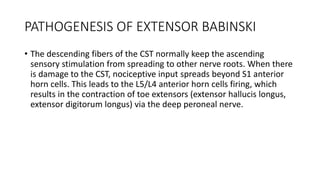
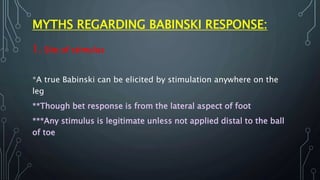
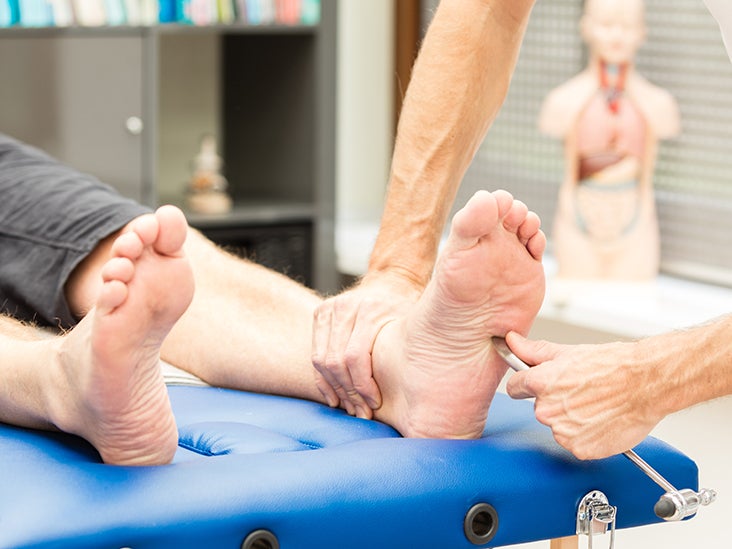
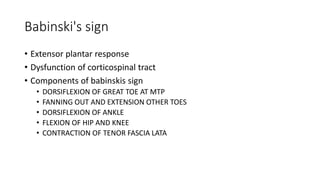

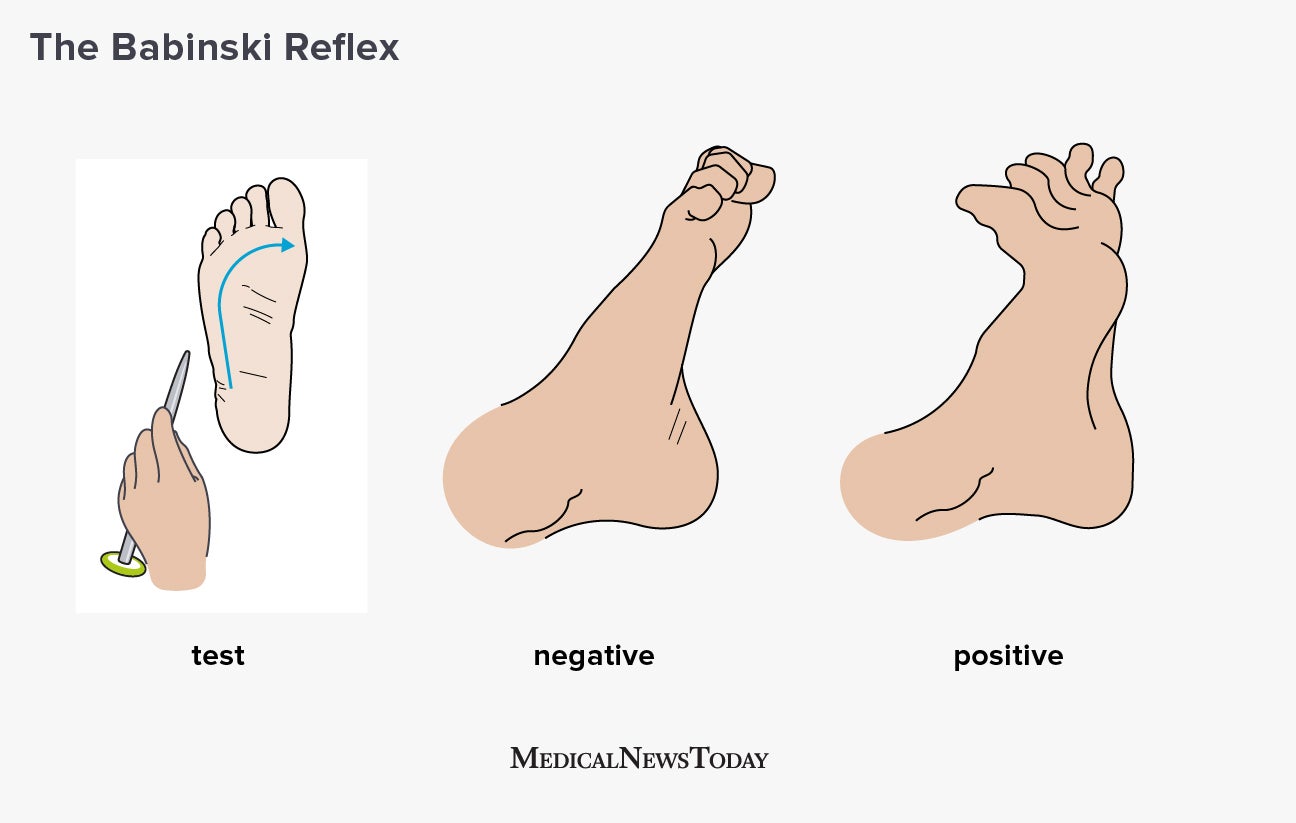
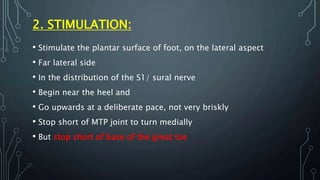
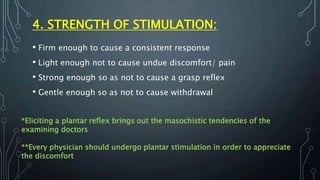

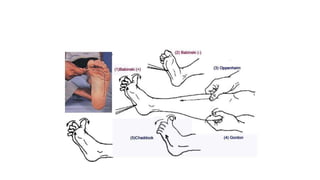
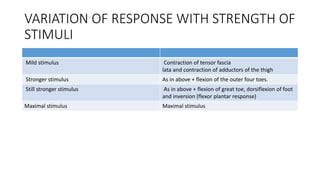
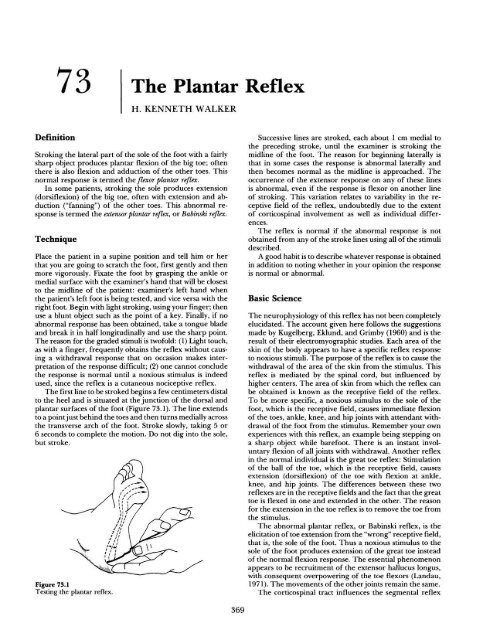

Comments
Post a Comment